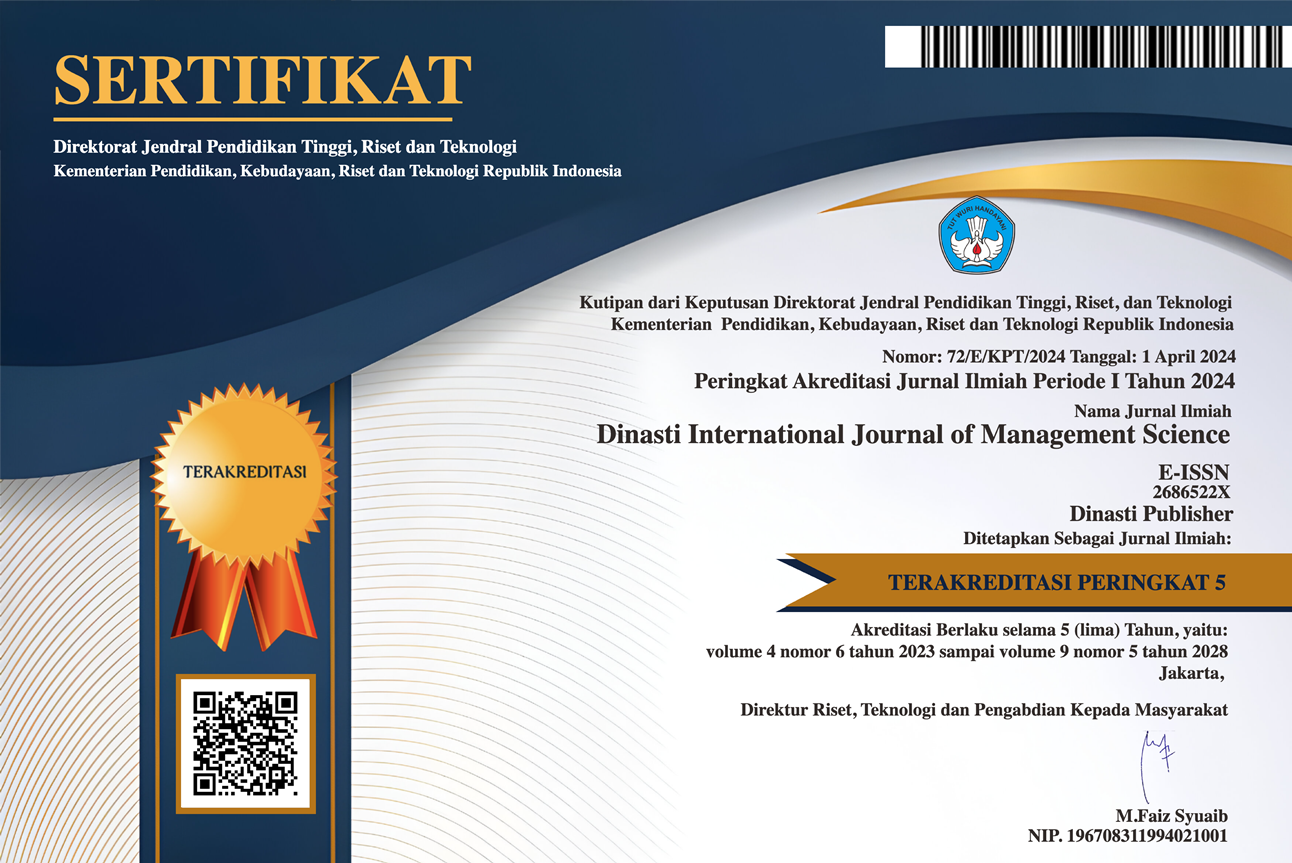The Influence of Leadership Style and Motivation on Employee Performance in Bhagasasi Bekasi Regional Public Companies
DOI:
https://doi.org/10.38035/dijms.v6i4.4399Keywords:
Leadership Style, Motivation, Employee Performance, Bhagasasi Regional Public CompanyAbstract
This research aims to determine the influence of leadership style and motivation on employee performance at the Bhagasasi Bekasi Regional Public Company. The method used is a quantitative method with a survey approach. Data was collected through a questionnaire distributed to employees working at the company. Data analysis was carried out using multiple linear regression to determine the direct influence of leadership style and motivation on employee performance. The results of this research indicate that both leadership style and motivation significantly influence employee performance at the Bhagasasi Bekasi Regional Public Company. This research contributes to the development of human resource management theory, especially in improving employee performance in the public sector.
References
Bass, B. M. (1990). From Transactional to Transformational Leadership: Learning to Share the Vision. Organizational Dynamics.
Herzberg, F. (1959). The Motivation to Work. John Wiley & Sons, Inc.
Locke, E. A., & Latham, G. P. (2002). Building a Practically Useful Theory of Goal Setting and Task Motivation. American Psychologist.
Maslow, A. H. (1943). A Theory of Human Motivation. Psychological Review.
Robbins, S. P. (2001). Organizational Behavior. Prentice Hall.
Yukl, G. (2006). Leadership in Organizations (6th ed.). Pearson Prentice Hall.
Schaufeli, W. B., & Bakker, A. B. (2004). Job Demands, Job Resources, and Their Relationship with Burnout and Engagement: A Multi-Sample Study. Journal of Organizational Behavior.
Luthans, F. (2005). Organizational Behavior (10th ed.). McGraw-Hill.
House, R. J. (1996). Path-Goal Theory of Leadership: Lessons, Legacy, and a Reformulated Theory. Leadership Quarterly.
Avolio, B. J., & Bass, B. M. (2002). Developing Potential Across a Full Range of Leadership: Cases on Transactional and Transformational Leadership. Lawrence Erlbaum Associates.
Vroom, V. H. (1964). Work and Motivation. Wiley.
Greenberg, J., & Baron, R. A. (2000). Behavior in Organizations (7th ed.). Prentice Hall.
Goleman, D. (2000). Emotional Intelligence: Why It Can Matter More Than IQ. Bantam Books.
Spreitzer, G. M. (1995). Psychological Empowerment in the Workplace: Dimensions, Measurement, and Validation. Academy of Management Journal.
Judge, T. A., & Bono, J. E. (2001). Relationship of Core Self-Evaluations Traits—Self-Esteem, Generalized Self-Efficacy, Locus of Control, and Emotional Stability—with Job Satisfaction and Job Performance: A Meta-Analysis. Journal of Applied Psychology
Downloads
Published
How to Cite
Issue
Section
License
Copyright (c) 2025 Ali Al Hanafi, Antoni Ludfi Arifin

This work is licensed under a Creative Commons Attribution 4.0 International License.
Authors who publish their manuscripts in this journal agree to the following conditions:
- The copyright on each article belongs to the author(s).
- The author acknowledges that the Dinasti International Journal of Management Science (DIJMS) has the right to be the first to publish with a Creative Commons Attribution 4.0 International license (Attribution 4.0 International (CC BY 4.0).
- Authors can submit articles separately, arrange for the non-exclusive distribution of manuscripts that have been published in this journal into other versions (e.g., sent to the author's institutional repository, publication into books, etc.), by acknowledging that the manuscript has been published for the first time in the Dinasti International Journal of Management Science (DIJMS).
















































